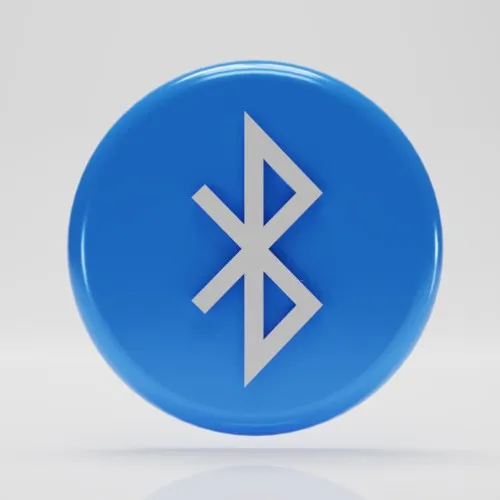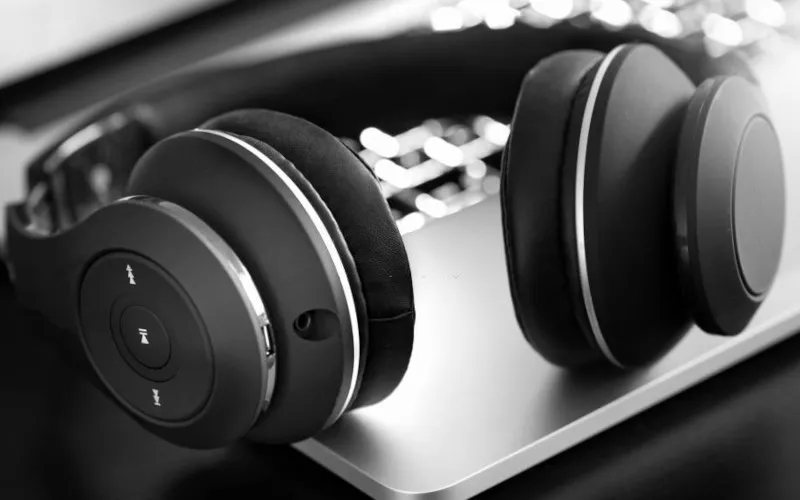If you’re like me, you’ve probably heard the term “Bluetooth” tossed around quite a bit. We see it in our phones, cars, and even our headphones. But have you ever heard of Bluetooth Low Energy, or BLE for short? It’s a pretty cool piece of tech that’s making a lot of new wireless gadgets possible.
This technology is a power-efficient version of the classic Bluetooth we all know and love, designed specifically for short bursts of long-range radio connections. What’s so special about it, you ask? Well, it’s all about the energy efficiency. This little marvel is bringing about a revolution in the world of wireless devices — from your fitness tracker to your smart home devices, and it’s making our lives just a bit easier and more connected.
So buckle up because we’re about to dive into the world of Bluetooth Low Energy: what it is, how it works, and how it’s shaping the future of wireless gadgets. Let’s get started, shall we?
Understanding Bluetooth Low Energy

Bluetooth Low Energy, often abbreviated as BLE, is a fascinating technology recently gaining traction. You might have heard it being referred to as Bluetooth Smart or Bluetooth 4.0. But what exactly is it, and how does it work? Well, let me explain.
BLE is a protocol, a set of rules devices follow to communicate. It’s a power-conserving variant of the classic Bluetooth technology we’re all familiar with. The “Low Energy” part of its name isn’t just for show. This technology was specifically designed to use less energy, making it perfect for devices that need to run for long periods on a small battery.
You might think, “But doesn’t regular Bluetooth already do that?” Not quite. While it’s true that classic Bluetooth can transmit data faster, it tends to respond slower to input. On the other hand, BLE may transmit data at a slower pace, but it responds to input much faster.
BLE achieves this by sending out repetitive packets of information over one of three channels, with random delays of up to 10 milliseconds. This method results in faster connections and lower energy consumption.
Like Wi-Fi, BLE is designed for short-range communication. However, its low energy consumption makes it a more suitable choice for devices like fitness trackers, smart home gadgets, and Internet-connected machines.
Bluetooth Low Energy is shaping the future of wireless technology. Its energy efficiency and quick response time make it an ideal choice for various devices. As we continue to innovate and create new wireless gadgets, it’s clear that BLE will play a significant role in our increasingly connected world.
How Bluetooth Low Energy Works
Imagine you’re at a party, and everyone’s talking at once. It’s pretty chaotic. Now imagine that instead of everyone talking over each other, they take turns based on specific rules. That’s essentially how BLE operates.
The BLE protocol stack is like the rulebook for this communication. It’s divided into a few different parts.
First up, we have the ‘Controller.’ This is the device’s physical layer, and it’s responsible for the radio frequencies and managing the data packets. Then, we have the ‘Host,’ which controls the connections and interactions with other devices.
Next up is the ‘Profiles’ layer. Think of this as the language that devices use to communicate with each other. Each device has a specific profile, like a Heart Rate Profile for a fitness tracker, which allows it to communicate its function to another device.
Now, how do these devices connect and talk to each other? It’s all about ‘advertising’ and ‘connections.’ Advertising is when a device signals to say, “Hey, I’m here!” If another device picks up that signal and wants to connect, it sends a connection request. Once connected, these devices can exchange information back and forth.
One of the best things about BLE is its power consumption. Remember how I said BLE uses less energy than regular Bluetooth? That’s because it’s designed to be in sleep mode and only wake up when it needs to transmit or receive data. This makes it perfect for devices that must run for a long time on a small battery.
So there you have it – a simplified explanation of Bluetooth Low Energy’s workings! It’s all about efficient communication, like having a good conversation at a party. Isn’t it cool how this technology helps our devices talk to each other?
BLE-enabled Wireless Gadgets
First up, we have fitness trackers and smartwatches. These little devices have become our health assistants, tracking everything from heart rate to sleep patterns. Thanks to BLE, they can connect to our smartphones and share this data with us in real time without draining their tiny batteries.
Next, let’s talk about smart home devices. From smart bulbs that change color with your mood to thermostats that learn your preferred temperature settings, these devices make our homes smarter and more energy-efficient. And guess what? They’re all using BLE to communicate with each other and our phones.
Then we have key finders – those small, handy devices that help you locate your keys when they go missing. These devices use BLE to connect to an app on your phone. Just ping the key finder from the app, and it’ll start beeping.
And let’s not forget about wireless headphones. While many still use classic Bluetooth, more and more are starting to utilize BLE for its lower power consumption, which means longer battery life for your tunes.
Last but not least, there’s a whole world of Internet of Things (IoT) devices out there that rely on BLE. These devices transform how we live and work, from industrial sensors to retail beacons that send personalized deals when you walk into a store.
Advantages of Bluetooth Low Energy
First and foremost, as the name suggests, BLE is incredibly energy-efficient. Unlike traditional Bluetooth, BLE is designed to be in sleep mode most of the time, drastically reducing its power consumption. This is a huge advantage for devices with small batteries, like fitness trackers and smartwatches, as it allows them to run for months or even years on a single charge.
Another major benefit is its quick connection time. BLE devices can establish a connection in just a few milliseconds, compared to the seconds it can take for traditional Bluetooth devices. This makes BLE ideal for applications where speed is of the essence, such as medical devices or key finders.
The third advantage is its flexibility. BLE supports various device types and applications, from wearable tech to smart home gadgets. And with each new version of Bluetooth, more features and capabilities are added, making BLE even more versatile.
Next up is its range. While BLE was initially designed for short-range communication, recent advancements have extended its reach. Some BLE devices can now communicate over distances of up to 100 meters, which is quite impressive.
Finally, there’s the advantage of compatibility. Most modern smartphones, tablets, and computers come equipped with BLE support, making connecting your BLE devices to your favorite gadgets easy.
Potential Applications of BLE

First, in the healthcare sector, BLE can play an instrumental role. Think about wearable health monitors that track heart rate, blood pressure, or glucose levels. These devices need to transmit data in real time to doctors or caregivers, and BLE’s energy efficiency and quick connection time make it perfect for this.
Next, consider the retail industry. Stores can use BLE beacons to send personalized offers or information to customers’ smartphones as they shop. So, if you’re walking past the shoe section, a beacon could send you a discount code for shoes. It’s a whole new level of targeted advertising!
In the world of sports and fitness, BLE has much to offer. Fitness trackers already use BLE to sync data with our smartphones but imagine more complex setups. For example, a gym could have BLE-enabled equipment that tracks your workout and suggests real-time adjustments.
Now, let’s talk about smart homes. BLE can connect all sorts of devices – from lights and thermostats to security systems and appliances. This allows you to control your home from your smartphone or voice commands.
Finally, think about industrial applications. BLE can monitor factory equipment, tracking temperature, pressure, or vibrations. This can help predict equipment failures and schedule maintenance, saving time and money.
These are just a few examples, but the possibilities are almost endless. With its flexibility, low power consumption, and broad compatibility, Bluetooth Low Energy opens up new opportunities in virtually every sector.
Future of Bluetooth Low Energy
First, I believe we’ll see BLE becoming even more prevalent daily. As more and more devices become ‘smart,’ they’ll need a way to communicate efficiently, and BLE is perfectly poised to fill that role. From our homes to our workplaces, I think we’ll be hard-pressed to find a corner of our lives that BLE doesn’t touch in some way.
Secondly, I anticipate significant advancements in BLE technology itself. We’ve already seen improved range and speed with each new version of Bluetooth, and I expect this trend to continue. That means faster connections, longer range, and even better energy efficiency.
Thirdly, I foresee an increasing focus on security. As BLE becomes more widespread, it will inevitably become a bigger target for hackers. Therefore, we’ll see more robust security features integrated into future BLE versions to keep our data safe.
In addition, I predict more integration of BLE with other technologies. For instance, combining BLE with AI could lead to ‘smarter’ devices that can learn from our behaviors and adjust their actions accordingly.
Lastly, I think we’ll see more innovative applications of BLE in sectors we may not have considered before. Could BLE play a role in environmental monitoring, helping us track air quality or water pollution? Or perhaps in agriculture, helping farmers monitor crop conditions? The possibilities are endless.
Conclusion
Bluetooth Low Energy (BLE) is a game changer in wireless communication. Its energy efficiency, fast connection time, versatility, extended range, and wide compatibility make it an ideal solution for numerous applications, from healthcare and retail to sports, smart homes, and industrial settings.
Looking forward, the future of BLE is incredibly bright. As our world becomes even more interconnected, and as ‘smart’ devices continue to permeate every corner of our lives, the demand for efficient, flexible, and secure wireless technology will only grow. With continuous advancements in speed, range, security, and integration with other technologies, BLE is well-positioned to meet this demand.
It’s exciting to think about how this technology will evolve and what new applications we’ll see. Whether in environmental monitoring, agriculture, or sectors yet to be considered, I believe BLE has the potential to revolutionize how we live and work. I can’t wait to see where this journey takes us.






